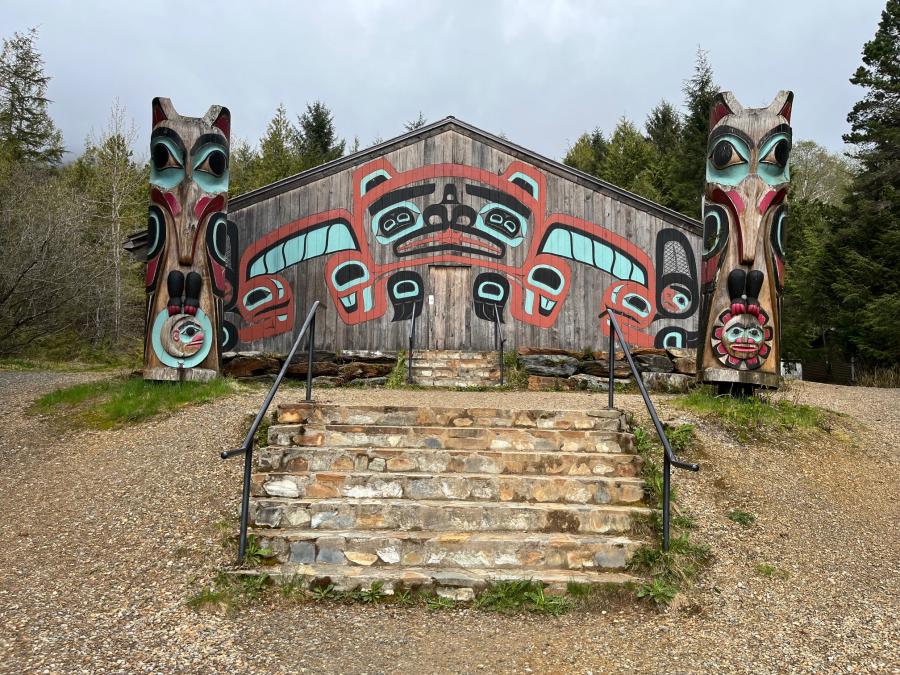Alaska Native corporations have come a long way and matured a great deal in the three decades since they were created under the Alaska Native Claims Settlement Act of 1971, known as ANCSA. While many people say this act was an experiment in capitalism on a grand scale, it is important to stress that the designers of the experiment were Alaska’s indigenous people. What they sought—and achieved—was an act of self-determination.
ANCSA was the first real settlement between Native Americans and the federal government in which Natives were allowed to exercise self-determination. Previous treaties and settlements involved land and assets held in trust for Native people by the federal government and controlled by the Bureau of Indian Affairs. The 44 million acres of land and nearly $1 billion ANCSA granted to Alaska Natives were controlled by Native boards of directors of Native corporations.
Thirty years after their creation, Alaska Native corporations have become powerful economic engines with a profound effect on the Alaska economy. Business endeavors run the gamut in Alaska from real estate and natural resource development to construction, tourism, and retail operations. Additionally, many of the corporations have invested in a wide range of businesses outside Alaska. The corporations’ importance and influence continue to grow at an exponential rate, giving them a powerful political voice in the state. At the same time, the corporations concern themselves with the social needs of Alaska Natives, as well as their economic well-being.
Although Alaska Native corporations are businesses in every sense of the word, there are some unique differences between them and other corporations in Alaska. For one, the leaders of different regional corporations work together as a team in many arenas. The Association of ANCSA Regional Corporation Presidents/Chief Executive Officers was created to foster leadership and teamwork among Native leaders. As president and chief executive officer (CEO) of Cook Inlet Region, Inc. (CIRI), because I am so familiar with my fellow corporate leaders, I am intimately aware that although we are all Native corporations, the way we go about achieving Native goals and objectives differs.
CIRI has done extremely well over the years, in part because our board has focused on stability for the long term. Throughout most of our history, we have decided against paying out a large percentage of our capital to shareholders, despite sometimes fervent voices urging us to do just that. Other corporations have at times found this force among their shareholders to be immutable, and some directors have found themselves forced off their boards in favor of new directors who are less concerned about the growth of their corporation.
But despite this success, we at CIRI have had less time to focus on important issues like subsistence, which are so vital in other regions, such as the NANA Regional Corporation region in northwest Alaska, the Doyon Ltd. region in interior Alaska, and the Arctic Slope region. NANA and Doyon decided early on that creating jobs for shareholders was a high priority, and they have done a commendable job of doing just that. The Arctic Slope Regional Corporation (ASRC) has opted to focus on developing revenue, and they are succeeding as well.
I believe that all of our Alaska Native corporations are just now beginning to come into their own and that we’ll see a lot more success throughout Alaska as a result. In order to reach this point, many of us, as with most corporations in America, have had hard times. Sometimes there are economic factors beyond our control, but the true test of management is to work through the hard times and turn the losses around. My fellow CEOs work hard at achieving the very best for the Native people of Alaska, and while all of us are taking somewhat different paths toward that goal, we are all working to better Native people socially and economically. Knowing that gives me great respect for my fellow CEOs. The dignity they bring to their efforts has led to many remarkable success stories that are only beginning to be written throughout Alaska.
When I reflect upon the sweeping changes that have been made in Alaska’s political, economic, and social landscape as a result of ANCSA and the creation of Native corporations, I find myself turning to our Native elders. I appreciate their wisdom more and more, especially as I rapidly approach becoming an elder.
As Native corporations, we are expending an ever-increasing amount of energy on the spiritual well-being of our people. Our elders have taught us that we are part of something larger. This intangible quality makes it most difficult for non-Natives to understand just what it is that Native corporations are about. As ANCSA states, Native corporations were created as the embodiment of a desire to craft a settlement “in conformity with the real economic and social needs of Natives.”
Growing for the Future
In addition to the nearly 200 Alaska Native corporations in operation, dozens of Native organizations, nonprofit organizations, and other entities have emerged as a direct result of ANCSA. Altogether, these many entities provide a great deal of shelter to many people. The corporations created under ANCSA are looking to the long-term future in creating institutions that may live long after the corporations, including local housing authorities, health agencies, and other social service organizations; foundations which in many cases are generously endowed; and statewide facilities such as the Alaska Native Heritage Center.
At the same time, some Native corporations have been able to seize hold of key opportunities. ASRC was the first Native corporation to make the Forbes 500 list in the 1990s, after Sealaska was listed in the mid-1980s. CIRI, while smaller in gross revenues, has shown consistently strong earnings. Among Alaska businesses, Native corporations are likely the largest importers of profits to Alaska. Some of our biggest business enterprises are outside the state. But even while we do business in the Lower-48 states and throughout the world, we are committed to Alaska. We’ll bring the money back, wherever the profits are made.
Economic Impact
The Association of ANCSA Regional Corporation Presidents/CEOs for the last three years has sponsored a statewide survey and report on the overall economic impact of Native corporations on the state. The most recent report includes data from the year 2001 for the 13 regional corporations and 30 of the 168 village corporations operating in the state.
The report shows that Native corporations provide jobs, revenue, and commitment to the Alaska economy. Some key highlights for the 43 corporations surveyed include:
-Revenue of $2.9 billion and assets of $2.9 billion
-$52.1 million in dividends and $434 million in payroll (within Alaska) -Statewide employment of 13,062
-Alaska Native employment of 3,122
-$9.3 million donated to charitable organizations and $4.1 million distributed for scholarships to 2,821 recipients
-Such substantial contributions to charities in Alaska, as well as scholarships for Alaska Native students and dividends for Native corporation shareholders, provide a glimpse of the significant impact Native corporations have on the Alaska economy.
Of the 43 corporations included in the report, 13 were recognized in Alaska Business Monthly in October 2002 as among the state’s 49 most successful Alaskan businesses. The list was led by Arctic Slope Regional Corporation. Five Native regional corporations were in the top 10, and eight more Native regional and village corporations made the list.
The report notes that 2001 had mixed financial results for the corporations overall, but that it was a record year for CIRI. Net income was more than four times the previous year’s, driven largely by the sale of CIRI’s telecommunications investments with VoiceStream Wireless Corporation, which we viewed as a one-time home-run that we were able to pass on to our shareholders in special distributions of nearly $400 million total.
Total net income in 2001 for the 13 regional corporations was $455 million, which was offset by net losses of $36 million sustained by five of the corporations. The total equity in 2001 was $1.5 billion.
Working Locally
As we celebrate our successes, we cannot forget that despair continues to nip at the heels of many of our family members. Many Alaska Natives who work at CIRI volunteer their time to assist at Bean’s Café, a kitchen for the homeless in Anchorage, and many other charities throughout the city. But despite a vast improvement since 1971, many of the people who need these services are also Alaska Natives.
As Native corporation leaders, we continue to ask ourselves how the power and the profits of Native corporations can best be harnessed to empower our people and honor our cultures. When we look to the past, we see that Native leadership was instrumental in crafting ANCSA to create an act of self-determination. The goal was not to create reservations, but a new kind of business enterprise controlled in every way by Alaska Natives. The business enterprises so far created by the act have succeeded and are thriving. ANCSA has become the biggest minority success story of the nation. The act did not solve all the social problems of Alaska’s Native people, but it was never intended to solve all the problems.
As we look to the future, we can look to our cultural and traditional values and our elders for guidance. The leaders who crafted ANCSA wisely developed an evolving agreement, which has been amended many times and likely will be amended many more times. Those who will make the changes in the future will be Native people themselves—in acts of self-determination.
Carl H. Marrs is the chief executive officer of the Cook Inlet Region, Inc.



